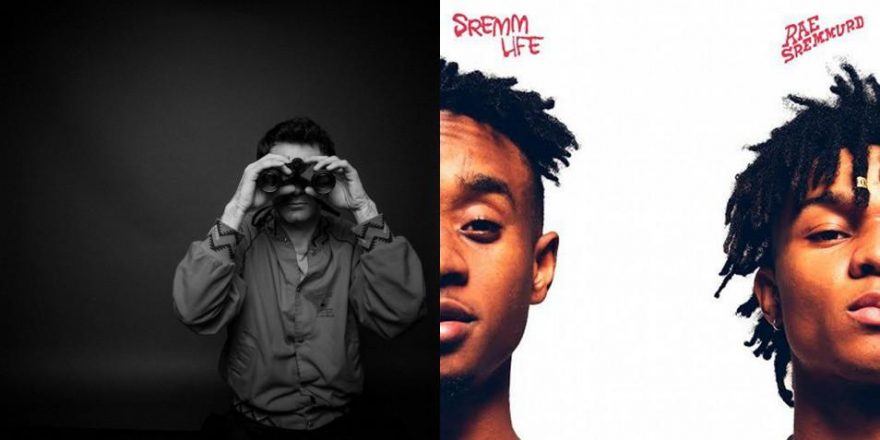Early on in the construction of one of his best-known theories, philosopher-author Roland Barthes (whom I harp on to excess, yup, I know) wrote about signs in a way that defined them as anything that, along with its primary meaning, had the power to help define a national or cultural identity. He wrote of the ubiquity of the Eiffel Tower, seemingly visible from every point in Paris except its own top floor — an entity “whose meaning can be questioned to infinity, but whose existence is incontestable.” He recognized the Tower’s universality as a symbol of Paris, defining the city for people in places that are “not Paris,” as a site visited to participate in the dream of what it is.
In this way, one could define Spencer’s Gifts or Forever21 as “not Shaolin” (Wu-Tang parlance for Staten Island). Yet there, licensed so thoroughly as to be stripped of meaning (in the way that repeating a word ad nauseam strips it of meaning), applied with a heavy, funny hand to lighters, shower curtains, dog sweaters and crop-tops, is the ubiquitous, incontestable Wu-Tang “W.” Unlike the Tower, which Barthes explicitly identifies as being “virtually empty” in his estimation (and therefore able to be filled), the W once contained an entire world.
RZA acknowledged this at “Wu-Tang Clan, Once Upon a Time in Shaolin,” a listening session and Q&A held at MoMA PS1 in early March. Life has changed exponentially since 1993’s Enter the Wu-Tang (36 Chambers). The life that provided them with their original material and subject matter has obviously undergone many changes since their rise to international fame. The trade-off is the colonization and dispersal of the “meaning” of Wu-Tang — an indefinable “it-ness,” an X factor where X is represented by that omnipresent “W.” The purchase of branded items is a co-signature on that undefined quality, worn in support of the dream of what Wu-Tang is; something a person can purport to agree with, not something one can experience oneself.
As with so many non-white revolutionary icons — from Bob Marley to the Rev. Dr. Martin Luther King, Jr. — the image and its associated meanings have been watered down by the powers that be for safe consumption, in much the same way that national cuisines are colonized, oversimplified and dulled at the edges so as to be palatable to western white restaurant-goers. The message as it was delivered was one of honor and mysticism, the pitfalls of capitalism, of terror — entering the 36 chambers of death, which they themselves had presumably entered, survived and exited in a Shaolin Bildungsroman. This is the stuff of Mishima and Marquez, not someone’s novelty shower curtain.
To get away — as Barthes said Maupassant did by ascending the Tower — RZA took off to a place as far removed from Forever21 as possible, somewhere he couldn’t see the W for the world: the pyramids of Giza, after-hours, where he rode horses through the sands at dusk with producer Cilvarings, the place where they came up with the first ideas that led to what they are billing as their final album, Once Upon a Time in Shaolin.
The album, limited to one copy encased in a handmade silver-and-nickel box with an accompanying book, is a return to the idea of a sign-object that can provide contextual clues to a cultural identity. It’s an expensive effort toward reclaiming the history of a symbol lost to globalization. Like the Tower, to its detractors, it seems purposeless. (And, like the Tower, at PS1 the box was empty, the only existing copy locked in a vault in Marrakesh.) A record-object that will only (financially) benefit a small group of people, that will ostensibly not be heard by the public for 88 years, runs directly counter to the licensing machine that’s placed the golden arches of the W on par with its inverse, the M.
People are happy to see and attempt to connect with the symbol — it’s an identity-fixer, it means something in the great image-repertoire, though exactly what it means remains undefined, save for maybe in the collective consciousness of the group’s early roster. This knowledge — the Wu-Tang secret? — has been lost to time, necessitating a recreation as close to Enter the Wu-Tang (36 Chambers) as they could manage (evidenced through the sound of the record, of which I have admittedly only heard 13 minutes). Viewed through this lens — acknowledging that its existence as a unique object is reliant on its success at being a convincing copy of the original — it makes sense that the project’s detractors find it meaningless.
This is where the 88-year benchmark begins to look curious. Given that the greatest flaw of western archaeology is its willingness to construct false meaning through assumption, Once Upon a Time… could go one of two ways: maybe in ten years, a making-of documentary will surface, answers will be immediate and readily available and the project will lose its glow. Or the album will exist much in the same way the pyramids of Giza exist. We’re still empty-handed when it comes to figuring out the technology behind their construction. We’re also completely in the dark regarding the motivation for building them, or their intended use. (This is where car accidents like the TV show Ancient Aliens come into play.) It is a project built on secretive, singular experiences kept between a small group of people who, if everything goes according to plan, will be long dead by the time the album is heard by the public.
Babies born this year will be 88 years old when the album is made available. Their children will be in their fifties, and their children in their twenties and thirties, and so on.
At PS1, after a question about the impetus to release a record backed by this sort of gesture, RZA paused for a moment before explaining, “Some things are myth, some things are magic, some things are true.” Signs — the Tower, the box, the 36 chambers of death — are all these things at once. Experience, told and retold, is the basis of myth, while the physical artistic output, placed in a museum or kept among the members of a culture, retains some of the magic. The truth, says RZA, is the same as what’s found in Michelangelo’s David or Da Vinci’s Mona Lisa — the compelling singular object, owned by one person but known to all — categorically entrancing because the artist is no longer around (and therefore under no obligation to explain their process or the meaning of the work).
Archaeology writes history — we cobble together a culture’s identity based on signs, upon which we superimpose meaning and theories. In the absence of any actual listenable album, as there is only the one copy and all others have been destroyed, arguably the key to the project’s meaning will be destroyed as well: no gods, no masters. The box from Morocco, the book from Serbia, the stories from 1993, the men from Shaolin, all add up to the kind of ahistorical conundrum that, three generations from now, will be wiped and rewritten as needed in whatever way serves to define and affix the cultural identity of our fourth-great-grandkids. After all, Wu-Tang is for the children.









